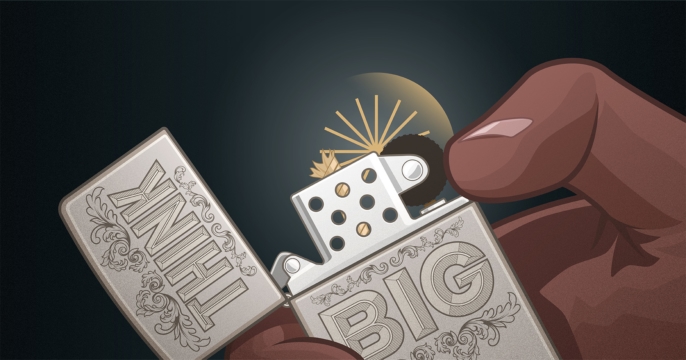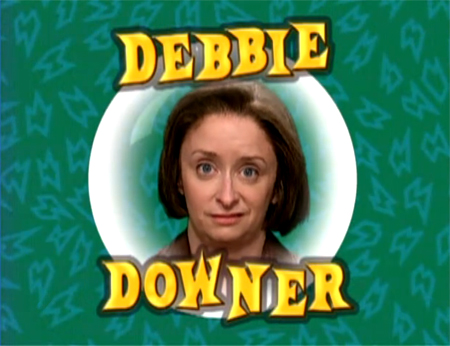
Introducing ‘The Spark’
‘The Spark’ is when business leaders stand right on the cusp of opportunity, but need a little extra oomph to move from inspiration to transformation. Keep an eye on the Kinesis blog for this new series.
With winter setting in, my visits to the grocery aisle reveal new options. Fall apples plentiful, and choices abound.
As I picked up a Honeycrisp apple I was struck by the connection between this excellent fruit and a story on low-performing employees. Or, as the story goes, the "bad apples" in the business.
If you've never had a Honeycrisp apple, you don't know what you're missing: juicy, full of flavor, firm, and delicious. These apples are the premium choice at any store and connoisseurs gladly pay the high price tag for this for this outstanding varietal.
Honeycrisps are a lot like your best employees: they usually cost a bit more but are worth every penny; they stand out amongst the rest; once you've had the top-performer experience, there's no going back.
On the flip side of the coin is the Bad Apple. We all know that you wouldn't pay a dime for a real bad apple, yet some businesses insist on repeatedly paying for bad employees. Anecdotally, we know there's a cost for low-performing team players, but just how much do these Bad Apples really cost ?

As it turns out, there's actually a real, identifiable cost to Bad Apples. Even worse? The old axiom is true: bad apples aren't just bad - they actually degrade the Good Apples (employees) around them.
In the study How, When, and Why Bad Apples Spoil the Barrel Professor Will Phelps illustrates how the "spillover" effect from a bad apple can diminish an otherwise highly productive team. Through a series of specific experiments, Phelps and his team showed that just one "bad apple" will drive down team effectiveness by 30-40%! Even though we intuitively think a strong, high-performing team can overcome the one Bad Apple, test after test showed that there's simply no winning with a losing player.
This American Life recently re-broadcast this story and you can listen to it here.
You can also read a Wall Street Journal article on the study.
Phelps and his team identified three main types of "apples" in the study. You've no-doubt worked with or employed one of these types before:
1. THE JERK
This personality type is simply rude. They criticize others and their ideas without contributing solutions of their own.
2. THE SLACKER
Indifference rules. This apple doesn't care if things get done, and demonstrates it with words and deeds (or lack of deeds!)
3. THE DEPRESSIVE PESSIMIST
This person complains and drags down the energy of the team. Unlike the Jerk (attacks) this Apple simply complains about the overall malaise of the situation. One blogger called this the "Debbie Downer" of the workforce. Pretty much sums it up!

It's a bad situation and we've all experienced it at one time or another. And, sadly, our tools for addressing the Bad Apple are often inadequate: we'll pretend the problem doesn't exist, pass on the work to someone else, or even try to isolate the bad apple from others in the company. Sometimes we make repeated attempts at changing the Bad Apple's behavior.
Truth is, all of these solutions are band-aids. Core behaviors (hah!) are slow to change - the seed of personality was planted long ago and no amount of HR intervention will remake the individual. Instead, it's probably best to take the advice of experts that have studied this sort of thing for years....guys like Jim Collins whose seminal book, "Built to Last" has it right on the mark: cut the rot early before it spreads.
While Kinesis' focus is on the science and art of marketing, it's impossible to turn a blind eye to other key business areas. We've had clients with weak profits discover that the problem wasn't their marketing or sales, but rather the way customers were treated by key staff. In other cases, Bad Apples weren't exposed to clients, but instead had such a profound impact in the internal teams that the end result was just as bad. If you care about perception of your brand - both internally and externally, you should care about how Bad Apples are tarnishing that hard-fought business image.
To put a financial point on this: most of our clients are in the professional services arena where each employee represents roughly $100-$200k in top-line revenue. Often, these businesses are organized in sub-groups where an Apple might work with 3 or 4 others, accounting for a total revenue of somewhere around $500,000 per year. Now take this one step further and apply Phelps' research: at only 60% efficiency (courtesy of the Bad Apple) the team is missing over $200,000 in potential revenue! It might sound crazy, but I've seen instances just like this: removing the Bad Apple not only frees up payroll (and funds for marketing) but total revenues also rise as a result of increased productivity by the remaining top-performers.
Moral of the story: Once your business is filled with top-performers, you'll see an exponential growth in productivity, marketing success, and profits. Even better? Once the Bad Apple is gone, the rest of the team will thank you for making the right move.
Get insights like this straight to your inbox.